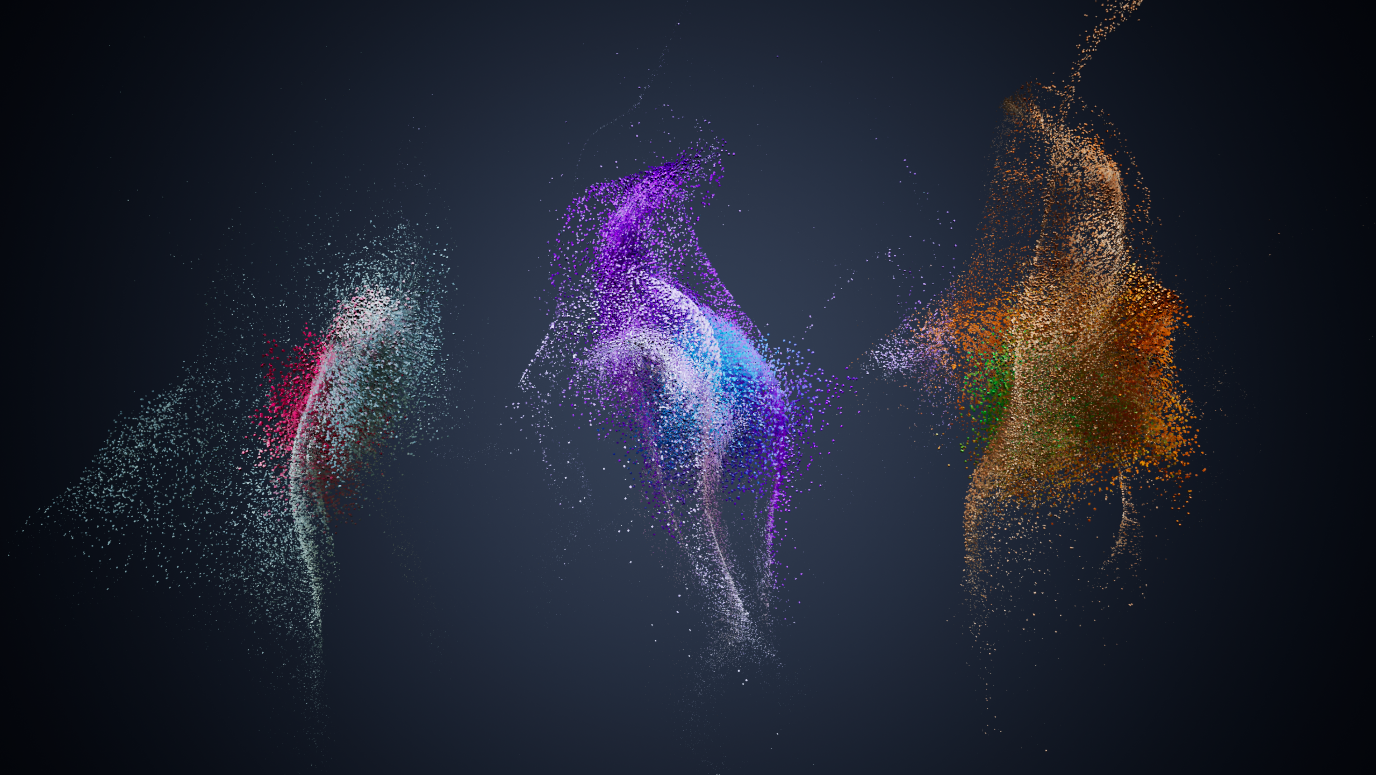Motion art captures city life and multiple design awards

One member of the project team likened the visualisations to mythical creatures, which become subdued at night when the suburbs are quiet and come alive at peak times of the day
In summary
- Three Corners of the City is a motion art piece commissioned by the City of Casey to promote the creative use of data from smart city sensors
- The motion art piece pioneers the use of real-time data to create mesmerising live visualisations
- It has earned a DNA Paris award, Australian Good Design Award and, more recently, a Victorian Premier’s Design Award
A Swinburne motion design team is taking data from the lives of everyday Melburnians and transforming it into a living artwork.
Lead designer James Berrett, project manager Sonja Pedell and communication designer Simone Taffe have used smart city data to create a captivating set of real-time data visualisations that respond to human movements around the City of Casey.
The motion artwork called Three Corners of the City featured at Bunjil Place community hub and has been awarded the Victorian Premier’s Design Award Best in Category Digital Design, an Australian Good Design Award and a DNA Paris Design Award.
What is smart city data?
Smart city data is information collected from Internet of Things (IoT) sensors placed around a city.
The sensors can track a variety of information, such as when a button is pressed, a bin is emptied or a person walks past.
The City of Casey has developed an open data platform to make all that information accessible to the public.
"The driver for the project was to showcase movement across the City of Casey 24/7 and demonstrate how smart city data can be used in creative ways,” Berrett says.
"The council commissioned this piece to engage community members in what is happening around the City of Casey."
The project uses real-time data sets from Narre Warren, Berwick and Cranbourne that measure the amount of pedestrian traffic in busy areas.
“It was about taking the everyday life of people, the movements of people, and turning this information into something visually engaging,” Berrett says.

The unique colour sets for the suburbs helped to give each data set its own personality.
Transforming numbers into living art
The challenge was to take raw data, something that would usually not interest the public, and transform it into a creation that was visually captivating and could be understood intuitively.
Berrett used his diverse background in visual effects, graphic design, motion graphics and media art to curate meaningful data sets and transformed them into intriguing motion graphics visualisations.
One of the most unique aspects of the project is that it allows viewers to see what is happening across their city in real time.
Motion graphics are usually created in timeline-based applications, making this impossible, but Three Corners of the City uses a game engine instead.
The team designed the standalone real-time application from scratch. It uses the foot traffic in each suburb to determine the density, colour intensity, speed, and direction of the particles that make up the visualisations.
These multifaceted visuals make it intuitive to relate peaks and troughs in the data to a suburb’s respective movement and ‘busy-ness’.
This was particularly important to ensure the visualisation was accessible across language barriers for the City of Casey’s multicultural community.

The project encouraged people to consider the visualisations through their own lens.
Recognition on a local, national and international level
The project has won three prestigious awards: a Victoria Premier’s Design Award, an Australian Good Design Award, and a DNA Paris Design Award.
The awards have recognised the unique use of motion graphics to communicate real-time data to a diverse audience in a digestible and engaging manner.
The Good Design Awards jury compared the work to that of critically acclaimed artist, Refik Anadol.
Subtle date and time indicators on each side of the motion artwork serve as contextualising clues for the viewer as they compare the movements of the three suburbs.
-
Media Enquiries
Related articles
-

- Design
Swinburne alum launches zine celebrating Asian Australian art and identity
Swinburne Graphic Design alum Dan Truong founded HOISZN, a zine publication showcasing Asian Australian artists and their work.
Monday 01 July 2024 -

- Design
Swinburne students shine in lighting design collaboration
Swinburne students collaborated with About Space Lighting, resulting in several student-designed lamps being put into production.
Friday 07 June 2024 -

- University
Swinburne University of Technology partners with Grande Experiences and THE LUME Melbourne for cutting-edge Immersive Media education
Swinburne University of Technology is proud to announce its partnership with Grande Experiences and THE LUME Melbourne, enhancing the future of Immersive Media education.
Thursday 13 June 2024 -

- Design
Yarra Trams feature Women in Trades campaign designed by Swinburne students
School of Design and Architecture students in Swinburne’s Bureau collaborated with Tradeswomen Australia Group to design a tram wrap celebrating women in trades.
Thursday 16 May 2024 -

- Design
- Astronomy
- Technology
- University
Swinburne ‘Rock Muncher’ takes part in Australian Rover Challenge
A multidisciplinary student team from Swinburne University of Technology competed in the 2024 Australian Rover Challenge held in Adelaide, South Australia.
Thursday 11 April 2024

